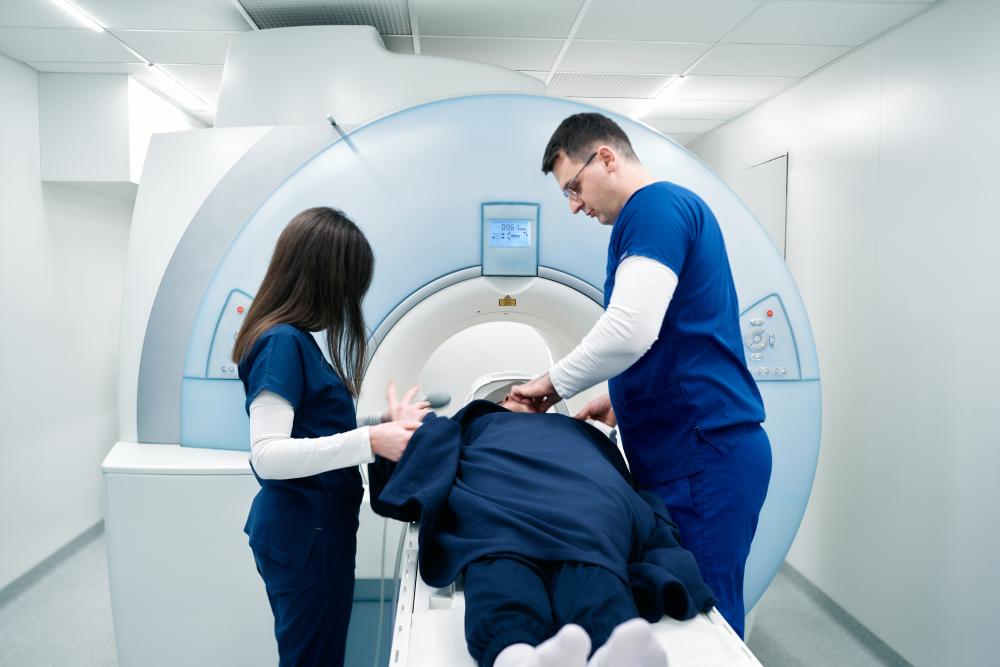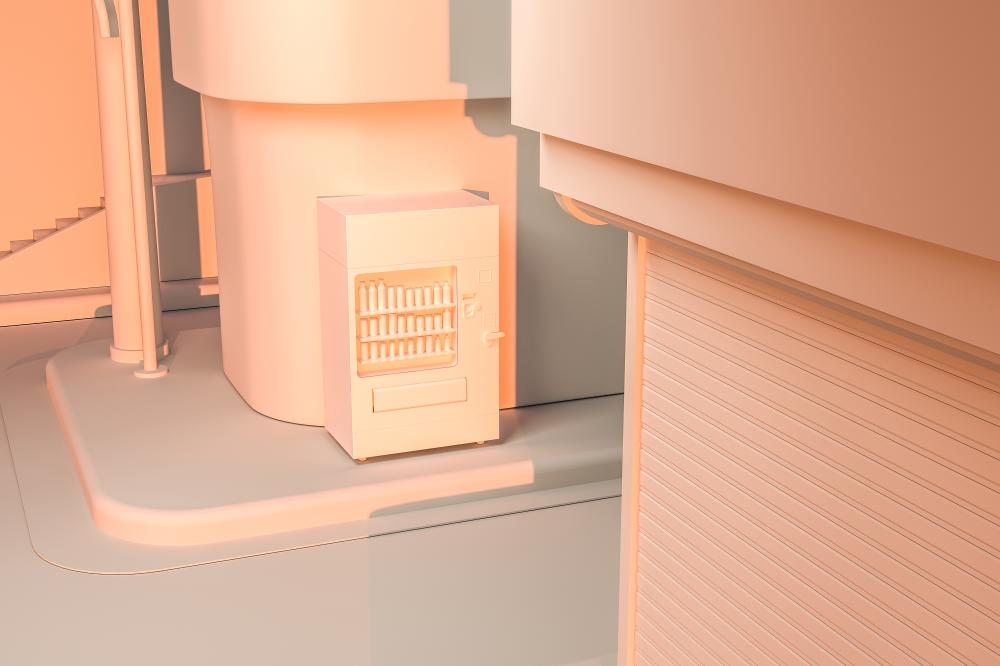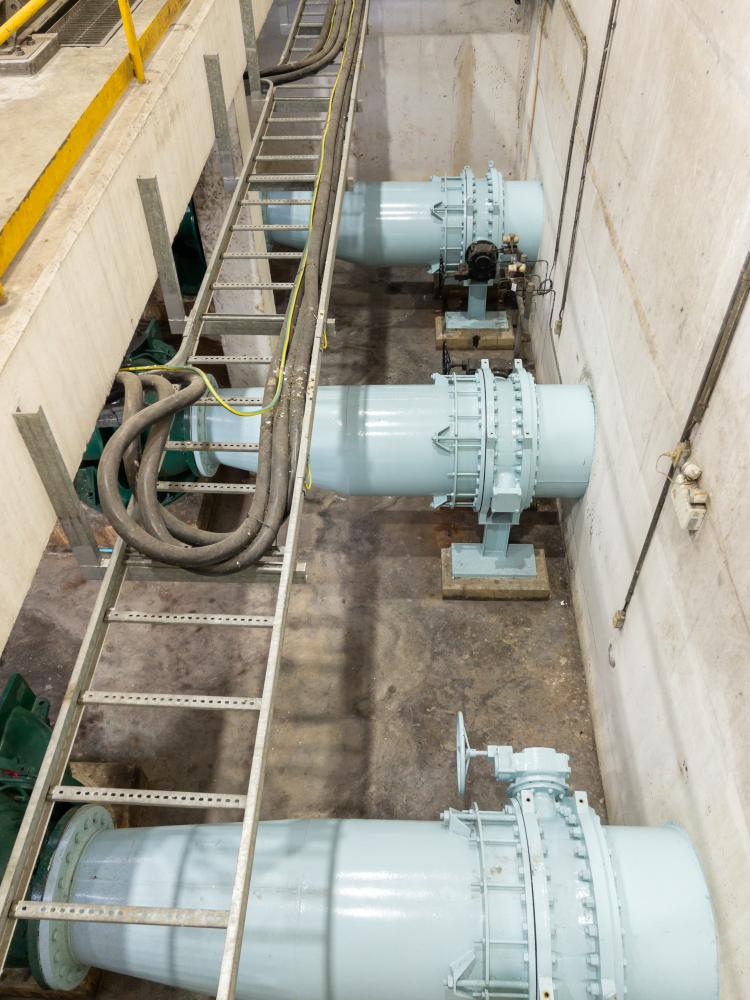
MRI Equipment Venting
MRI Equipment Venting is crucial for maintaining the safety and functionality of MRI systems. During an MRI quench, the rapid expulsion of helium gas is necessary to protect both the equipment and the surrounding environment. Helium is used to cool the superconducting magnets within the MRI machine, and if not properly vented, it can pose significant safety risks. Prompt venting ensures that helium is swiftly channeled away, thus preventing the buildup of pressure that could damage the equipment or, more critically, lead to personal injury.
This venting process requires specialized equipment, designed to handle the unique challenges posed by helium’s properties. Companies like Quench-Air, with over three decades of experience, offer tailored solutions that ensure the safe expulsion of these gases. The unique aspect of Quench-Air’s offering is their ability to provide systems that do not require field welding during installation, making the process smoother and safer.
Utilizing high-quality materials, such as stainless steel, these systems assure durability and reliability. It’s notable that Quench-Air’s commitment to safety and efficiency extends beyond national borders, with successful installations on five continents. This global reach underscores their reputation as a leader in the field of MRI Equipment Venting.
Components of Effective Quench Vent Systems
An efficient MRI Equipment Venting system includes several critical components. These include Cryogen Vent Waveguides, Quench Vent Flanges, and Cryogen Vent Assemblies, all of which play a role in directing and controlling the venting process. Cryogen Vent Waveguides, for example, are essential for leading the helium away from the machine and out into the atmosphere with minimal resistance, thereby safeguarding the integrity of the MRI equipment.
The Quench Vent Flanges provide a secure and flexible connection point, allowing for the quick adaptation and modification of the vent system as needed. This adaptability is particularly beneficial in facilities that may require custom solutions due to space constraints or specific operational needs. Lastly, Cryogen Vent Assemblies serve as the backbone of the venting system, ensuring all components function in unison to maintain efficiency and safety.
Quench-Air’s expertise in custom-built quench vent systems allows for these components to be tailored to the precise requirements of each client. This customization ensures optimal performance and safety for every installation, emphasizing the company’s commitment to quality and customer satisfaction.
Having streamlined processes for engineering, submittal, and customer support, Quench-Air facilitates an efficient project lifecycle from conception to implementation. Clients benefit from immediate responses and customizable fabrication arrangements, ensuring that their distinct requirements are met with precision.
Personal Experiences in MRI Equipment Venting
Over the years, MRI Equipment Venting has evolved significantly, informed by both technological advancements and real-world experiences. Many professionals in the field, including myself, have witnessed the dramatic improvements in safety and efficiency these systems now provide. Early in my career, I encountered situations where inadequate venting systems led to significant challenges, including extended downtime for repairs and heightened safety protocols.
With the introduction of advanced vent systems from companies like Quench-Air, these challenges have become markedly less frequent. Their focus on providing not just a product, but a comprehensive solution, is a testament to their deep understanding of the field’s demands. This approach has not only ensured safer environments in medical facilities but also contributed to smoother operational workflows.
Another notable aspect is Quench-Air’s focus on customer service, which is reflected in their after-hours availability and dedication to customizing fabrication arrangements. This level of support is invaluable, especially during critical situations requiring swift action and expert advice. Such personal anecdotes highlight the significant impact Quench-Air’s solutions have on ensuring both the safety and efficiency of MRI Equipment Venting across various settings.
Drawing from these experiences, it’s evident that the choice of a venting system can greatly influence the operational success and safety of MRI units. With Quench-Air’s expertise, clients can confidently rely on systems that not only meet but often exceed industry standards.

Importance of Quench Vent Systems for MRI
In the world of magnetic resonance imaging (MRI), Quench Vent Systems for MRI play a crucial role in maintaining safety and operational efficiency. These systems are designed to safely expel helium gas from MRI machines during a quench event, which is a rare but critical incident where the superconducting magnet loses its superconductivity. The release of helium, if not properly channeled, can lead to severe consequences such as equipment damage or, in worst cases, endangering personnel. Hence, a reliable Quench Vent System is not just a regulatory requirement but an essential safety measure.
With more than 30 years of industry expertise, Quench-Air stands out as a leader in the provision and installation of these critical safety systems. Their tailored Quench Vent Systems for MRI are renowned for requiring no field welding, simplifying the installation process significantly. This practical innovation ensures that the systems are both efficient and easy to implement, saving clients valuable time and resources. As safety compliance becomes increasingly stringent, Quench Vent Systems for MRI have become an indispensable component of medical facilities worldwide.
Quench-Air’s global expertise is further emphasized by their history of successfully shipping projects to five different continents, highlighting their commitment to high-quality workmanship and robust safety solutions. Such a track record not only demonstrates their capacity to meet diverse client needs but also reinforces their reputation as a trusted name in the industry.
Customization and Efficiency of Quench Vent Systems
What sets Quench-Air apart is their dedication to creating custom-built Quench Vent Systems for MRI, tailored specifically to each client’s unique requirements. This personalized approach ensures that every system is optimized for both safety and functionality, addressing specific operational needs. With a focus on Cryogen Vent Waveguides, Quench Vent Flanges, and Cryogen Vent Assemblies, their offerings cover a comprehensive range of components to suit any installation scenario.
Quench-Air’s commitment to customization extends beyond the initial design phase. Their team provides immediate responses for quotes and sizing calculations, ensuring that any logistical hurdles are swiftly addressed. This proactive customer service not only enhances the client experience but also guarantees that projects are completed on schedule. In my professional experience, having worked with Quench-Air’s systems, their prompt support and accurate solutions have proven invaluable in high-pressure industry environments.
The efficient process from fabrication to on-site implementation is one of Quench-Air’s hallmarks. By eliminating the need for on-site welding, the installation of Quench Vent Systems for MRI becomes a seamless process, minimizing downtime and maximizing operational efficiency. For medical facilities where time is of the essence, this can be a significant advantage.
Customer Support and Expertise
Beyond their technical prowess, what truly distinguishes Quench-Air is their unwavering commitment to customer support. Their team of experts not only delivers high-quality systems but also ensures a smooth and informed customer journey from inquiry to installation. Available even after hours, their support network demonstrates a genuine commitment to client satisfaction, which is often rare in this industry.
As someone who has liaised directly with their support team, I can attest to the professionalism and efficiency that Quench-Air consistently upholds. They recognize that each client’s needs can be vastly different and strive to provide solutions that are both innovative and practical. This level of adaptability and customer-focus is what makes Quench-Air an industry favorite.
Customers seeking reliable Quench Vent Systems for MRI will find in Quench-Air not just a supplier but a collaborative partner committed to excellence. Whether it’s for immediate engineering support or customizable fabrication arrangements, Quench-Air offers a comprehensive suite of services that ensures every project is handled with the utmost care and proficiency.
Importance of MRI Quench Vent System
The MRI Quench Vent System is an essential component in ensuring the safety and efficiency of MRI operations. When MRI machines quench, they release substantial amounts of helium gas, which can be hazardous if not properly vented. Helium, while not toxic, displaces oxygen in the air, posing a risk of asphyxiation if the space is not adequately ventilated. This is where our expertise at Quench-Air becomes invaluable. Our systems are specially designed to expel helium safely out of the building, minimising any risks associated with its sudden release.
Quench-Air’s three-decade-long experience in the industry has equipped us with the knowledge and tools necessary to cater to diverse client needs. We offer tailored solutions that ensure the MRI Quench Vent System meets specific site requirements, avoiding generic one-size-fits-all solutions. Our clients benefit from a system that integrates seamlessly with existing infrastructure, enhancing both safety and functionality.
For healthcare facilities, the reliability of our MRI Quench Vent System translates to uninterrupted workflows and peace of mind. Our systems ensure that if a quench occurs, the environment remains safe for patients and staff, preventing unnecessary equipment downtime. Our global reach and the ability to deliver projects across five continents speak volumes about the trust and satisfaction our clients have in our solutions.
Quench-Air Innovation and Dedication
At Quench-Air, innovation is the cornerstone of our approach to manufacturing MRI Quench Vent Systems. Our dedication to continually improving our cryogen vent systems is reflected in our cutting-edge products such as Cryogen Vent Waveguides and Quench Vent Flanges. These innovations ensure that clients receive the most advanced solutions available, supported by our meticulous attention to detail in every stage of the process.
Our no-field-welding installation method is a standout feature, designed to expedite the setup and reduce on-site complications. This approach not only streamlines the installation process but also ensures that our MRI Quench Vent Systems maintain their integrity and performance once in place. Quench-Air’s approach is not solely about selling a product but providing an entire suite of services that cater to every facet of vent system management.
Moreover, our clients have access to immediate engineering support and customer service, ensuring any queries or issues are swiftly addressed. This commitment to service excellence is a testament to our understanding of the critical nature of MRI operations, where time and precision are paramount. With our same-day shipping options, we ensure that our clients receive what they need precisely when they need it.
Customized Solutions and Global Reach
Quench-Air prides itself on delivering customized solutions tailored to the distinct needs of each MRI system installation. Our ability to fabricate bespoke components ensures that clients receive a product that aligns with their exact requirements. Collaboration with healthcare facilities allows us to develop vent systems that not only fit architectural limitations but also meet regulatory standards specific to each region.
Our global footprint signifies our capability to deliver both routine and complex projects efficiently and effectively on a worldwide scale. Quench-Air’s expertise spans across multiple continents, proving that our MRI Quench Vent Systems are trusted and effective in varied environments and conditions. Such adaptability and reliability are what set us apart in the competitive landscape of cryogen vent systems.
For institutions seeking a partner in cryogen vent solutions, Quench-Air offers unparalleled expertise combined with a personal touch. We understand that every facility operates differently, which is why we focus on creating systems that address unique challenges head-on. Reach out to Quench-Air today to experience superior service and innovative solutions tailored to your MRI Quench Vent System needs.

What are the requirements for MRI exhaust?
MRI exhaust systems are critical for safely venting helium gas during a quench event. The key requirements include efficiency in expelling the gas to prevent pressure buildup, durability to withstand extreme conditions, and adaptability to fit the specific layout of different facilities. Our Quench-Air systems are designed to meet these requirements by using high-quality materials like stainless steel, which ensures both reliability and longevity. Moreover, our system’s no-field-welding installation offers a streamlined process that enhances safety and reduces setup time. It’s essential to consult with an experienced provider to ensure compliance with local regulations and to tailor the system to your facility’s specific needs. Have you considered how the layout of your facility might impact your venting system requirements?
How to get through an MRI if you’re claustrophobic?
Undergoing an MRI can be daunting if you’re claustrophobic, but there are several strategies that might help ease your discomfort. Firstly, discussing your concerns with the technician can lead to accommodations such as the use of an open MRI machine, which is less enclosed. Some people find that listening to music or wearing an eye mask helps distract from the confined space. Deep breathing exercises and visualization techniques can also reduce anxiety. Remember, there’s always a call button you can press if you need to communicate with the staff. As someone deeply involved in MRI equipment systems, I know how crucial it is that patients feel comfortable and safe. Have you tried any relaxation techniques that work well for you in other stressful situations?
What happens when an MRI machine overheats?
If an MRI machine overheats, it could lead to a quench, where the superconducting magnets lose their superconductivity and release stored helium gas. This scenario is why venting systems like the ones we provide at Quench-Air are vital; they ensure that the helium is safely expelled to prevent equipment damage and ensure the safety of the facility’s occupants. An overheated MRI machine can cause significant downtime, affecting patient schedules and resulting in costly repairs. Preventative maintenance and monitoring systems can help detect issues before they escalate. It’s always reassuring to have a robust vent system in place to handle such emergencies efficiently. How often does your facility perform maintenance checks on MRI machines to prevent overheating?
Can you do MRI with a ventilator?
Yes, MRI examinations can be performed on patients using ventilators, but it’s important to coordinate closely with the medical team to ensure safety. Specialized ventilators compatible with MRI machines are required to prevent interference with the imaging process. Checking the equipment for MRI compatibility is crucial, as the strong magnetic field can disrupt standard devices. Our systems at Quench-Air emphasize safety and adaptability, allowing the MRI process to continue even under unusual circumstances. This adaptability speaks to our commitment to seamlessly integrating systems within diverse operational scenarios. How does your facility ensure all MRI-compatible equipment is properly maintained and ready for use?
Why are Quench Vent Systems for MRI so crucial?
Quench Vent Systems are critical in managing the helium gas released during a quench event in MRI machines. Without an efficient vent system, there is a risk of helium gas displacing oxygen in the room, which can lead to asphyxiation risks. At Quench-Air, we design our systems to ensure rapid and safe expulsion of helium, minimizing such risks and protecting both equipment and people. Our approach uses advanced materials and innovative design to ensure systems are both effective and easy to implement without field welding. This ensures that installations are not only safe but also quick and efficient. How does your facility prioritize safety measures like vent systems in its operational plans?
Resources
- U.S. Food and Drug Administration – The FDA’s website provides information on regulations and safety standards for medical devices like MRI equipment.
- National Center for Biotechnology Information – NCBI offers research and articles on MRI technology and safety protocols.
- World Health Organization – The WHO provides global health guidance, including recommendations for medical equipment safety.
- RadiologyInfo – This website offers patient-friendly resources on MRI procedures and safety measures.
- Centers for Disease Control and Prevention – The CDC’s website includes information on workplace safety, including guidelines for handling hazardous materials like helium.
